Client: Liberty University, Professor: Brianna O'Neal
Master of Visual Communication Design
Work: A to Z, Concept, Research, Sketch, Illustration, Presentation
Year: 2021
Book Cover Series
Les Misérables Novel by Victor Hugo
Inspiration, Brainstorming, and Initial Thoughts
I created cover illustrations for various volumes of Victor Hugo's epic novel "Les Misérables," a tale that follows the life of a kind man who endures imprisonment, forever haunted by his past. After serving 19 years as a prisoner, Jean Valjean is set free by Javert, the prison officer. Valjean initially violates his parole but later redeems himself using stolen silver to transform into a respected mayor and factory owner. However, Javert remains resolute in his pursuit to return Valjean to prison.
Eight years later, Valjean becomes the guardian of Cosette, a child orphaned after her mother's death. But Javert's unrelenting chase ensures that peace remains elusive. This sweeping story unfolds against the backdrop of the tumultuous French Revolution in the 1800s.
My inspiration for creating these cover illustrations was to capture the essence of a classic, multi-volume novel, exemplified by Victor Hugo's masterpiece published in 1862, hailed as one of the 19th century's greatest literary works. I chose a whimsical, cartoonish style for the covers, perhaps influenced by my affection for cartoons.
My personal connection to "Les Misérables" runs deep, as I grew up engrossed in its pages, deeply connecting with characters like Jean Valjean, Cosette, Fantine, Marius, Gavroche, Éponine, and even the enigmatic Inspector Javert. Over the years, I've been moved by various adaptations, including the 2012 musical film directed by Tom Hooper, which received numerous accolades. Although I also watched the 2018 TV series directed by Tom Shankland, I hold a special fondness for the 1967 episode of the TV show "Manga Fairy Tales of the World" or Manga sekai mukashi banashi that I grew up with, with its enchanting cartoon animation

Cosette" by Emile Bayard, from the original edition of Les Misérables (1862)
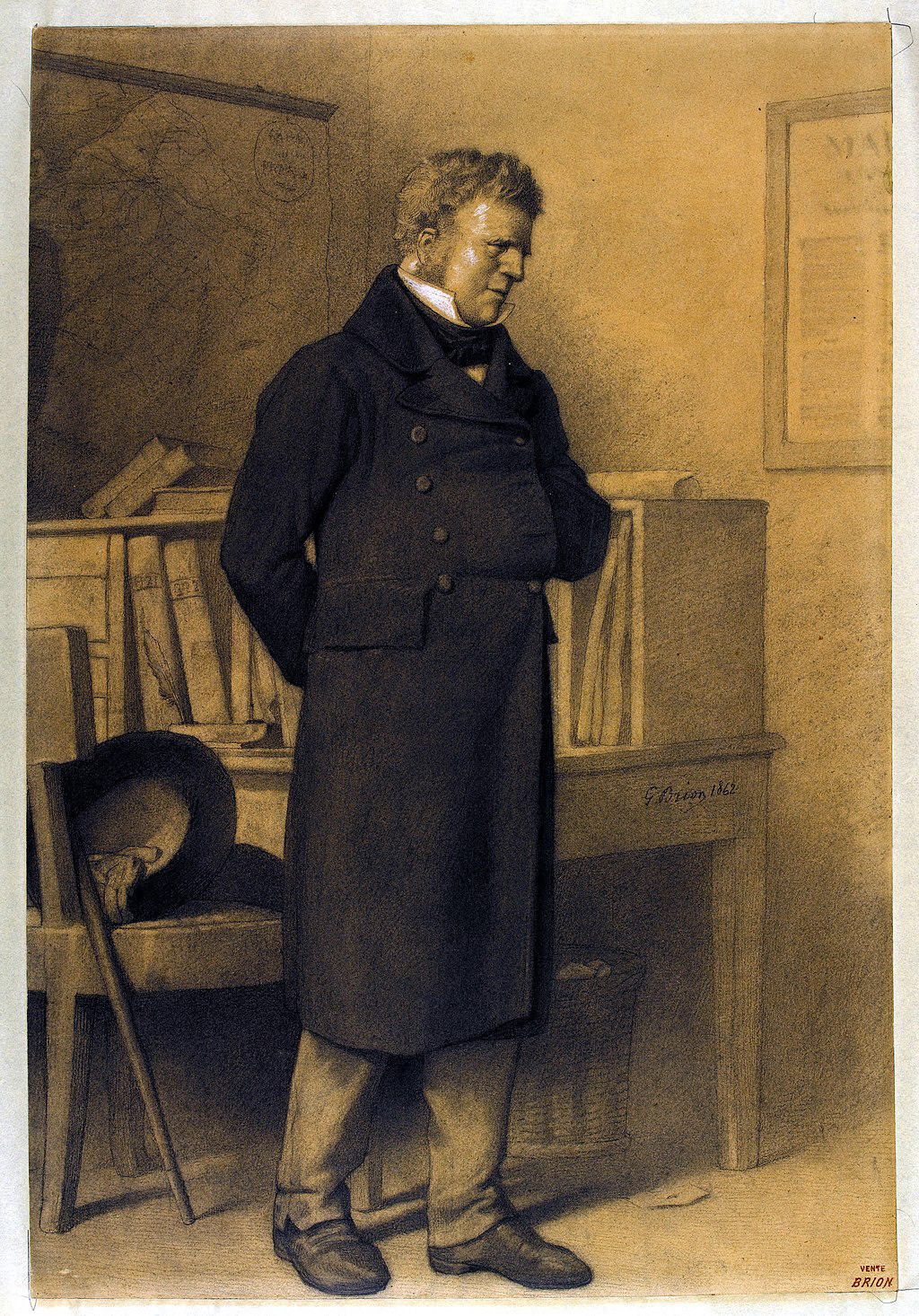
Jean Valjean, under the alias Monsieur Madeleine, illustration by Gustave Brion
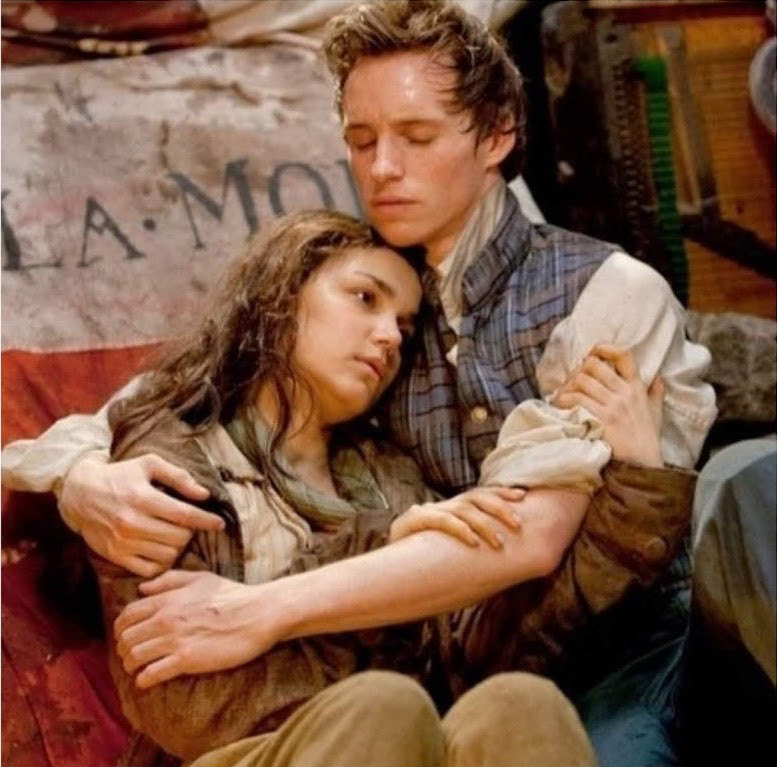
Marius and Eponin, Les Misérables movie (2012)

Jean Valjean and Fantine, Les Misérables movie (2012)
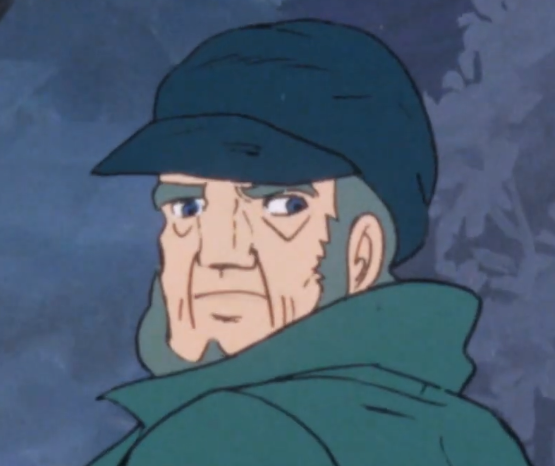
Jean Valjean, Manga sekai mukashi banashi, TV show (1967)
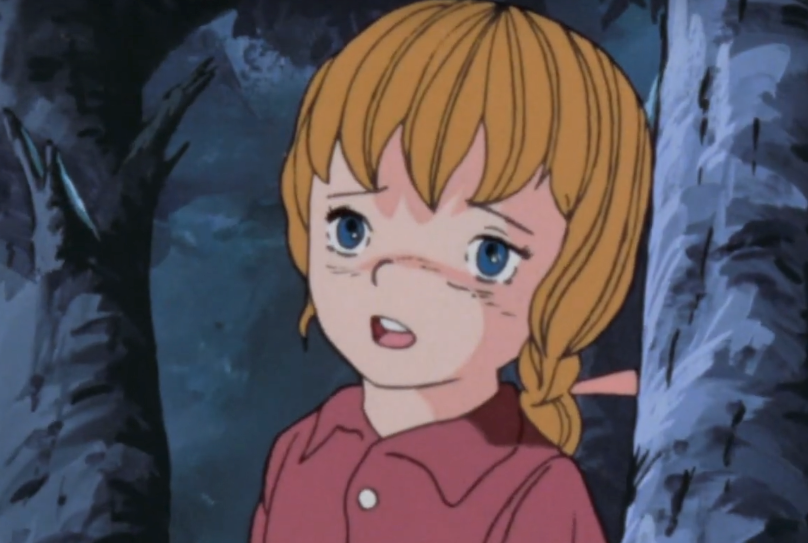
Cosette, Manga sekai mukashi banashi, TV show (1967)
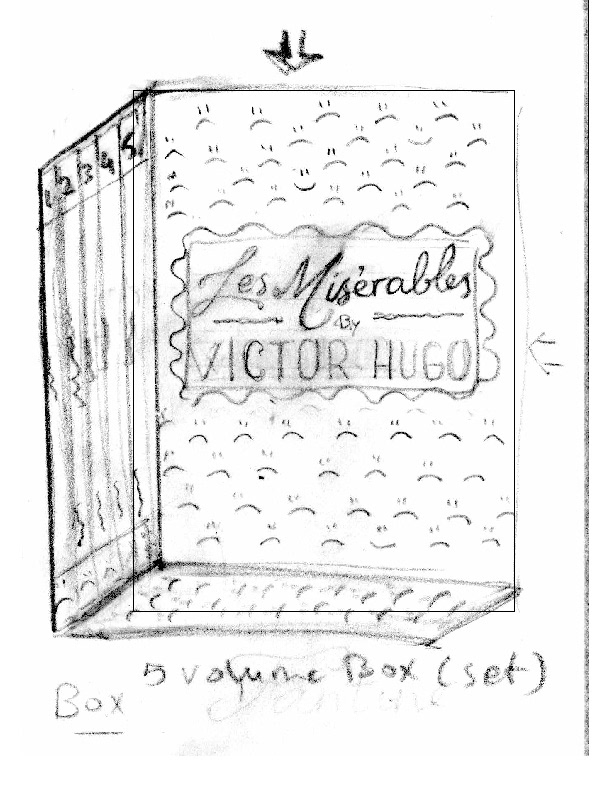

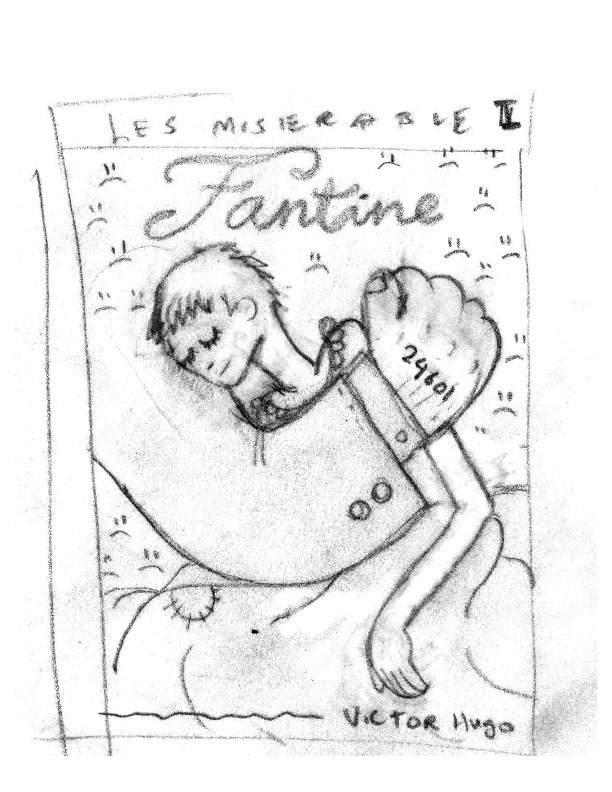



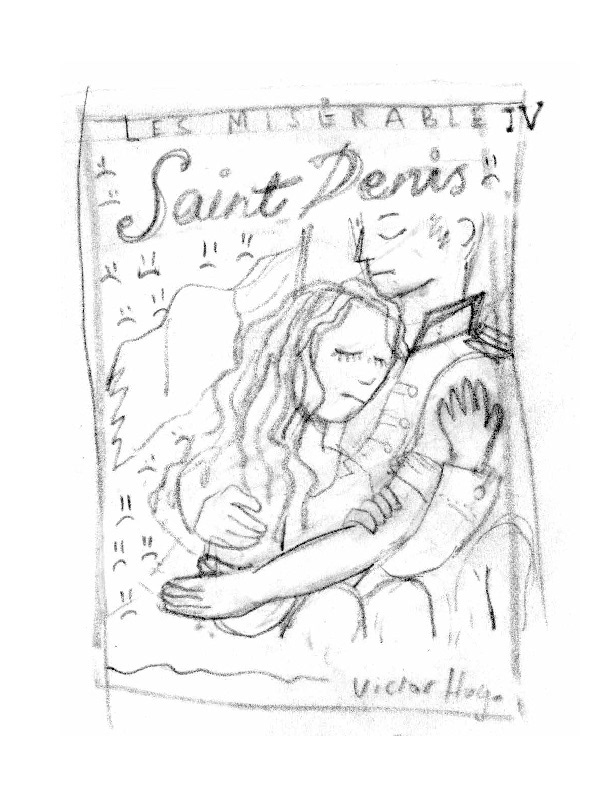


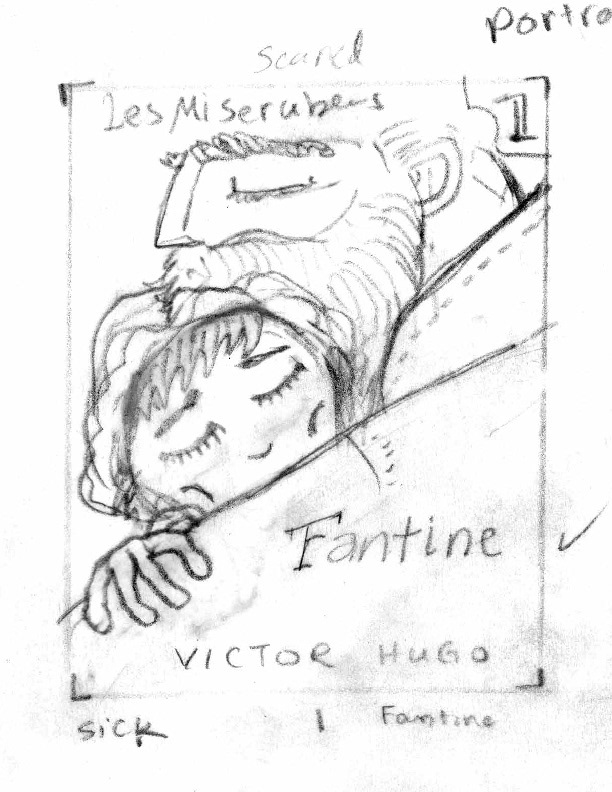

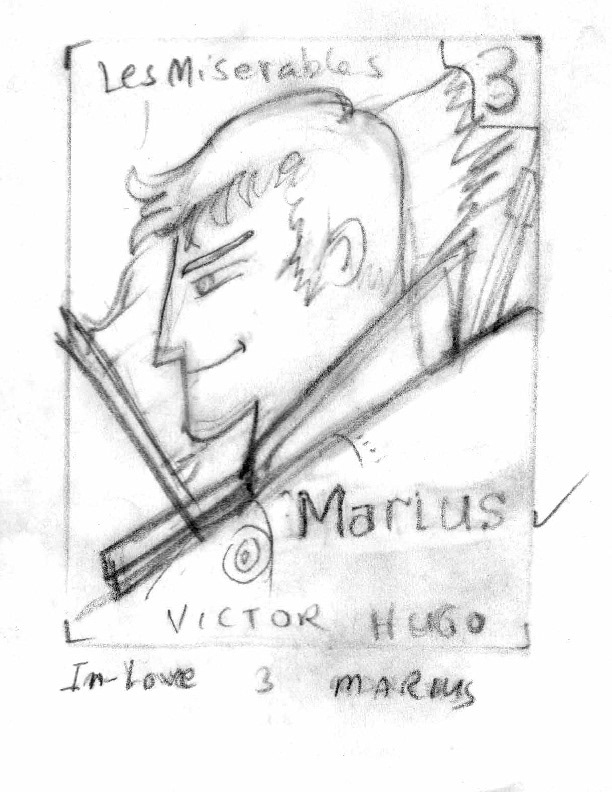
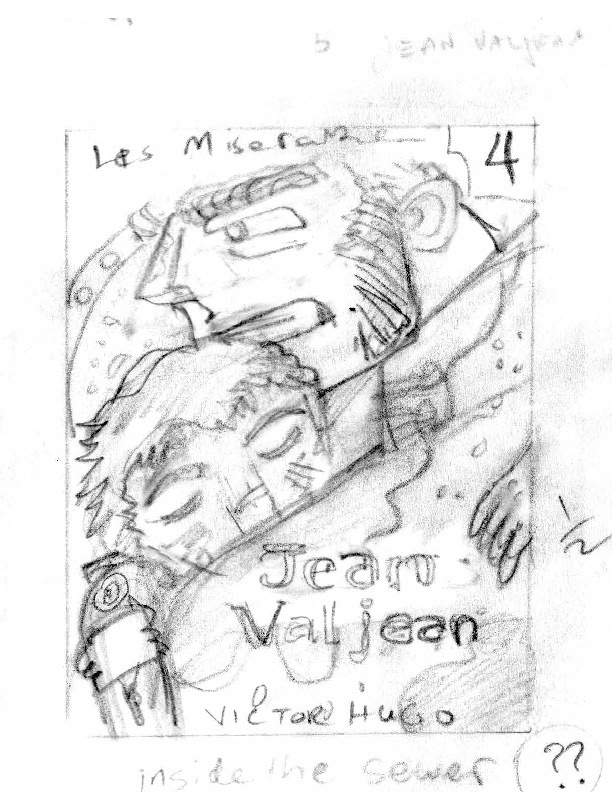


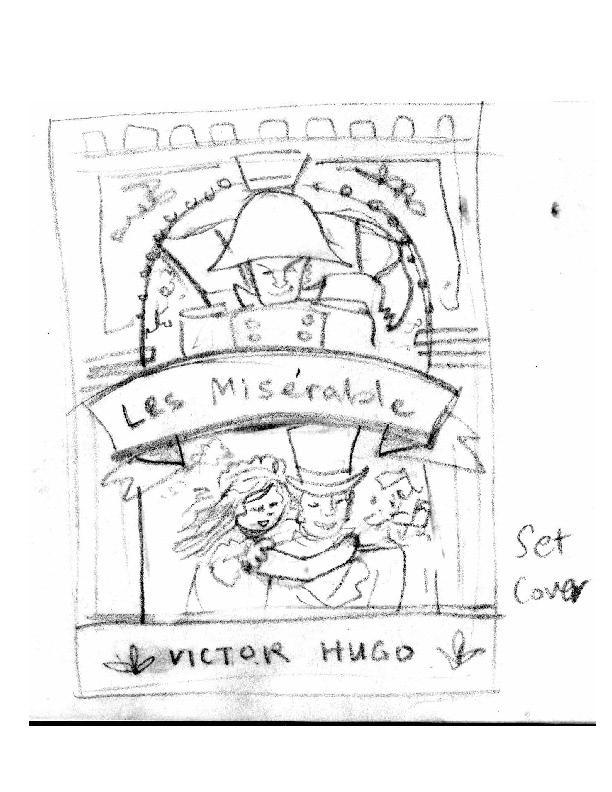
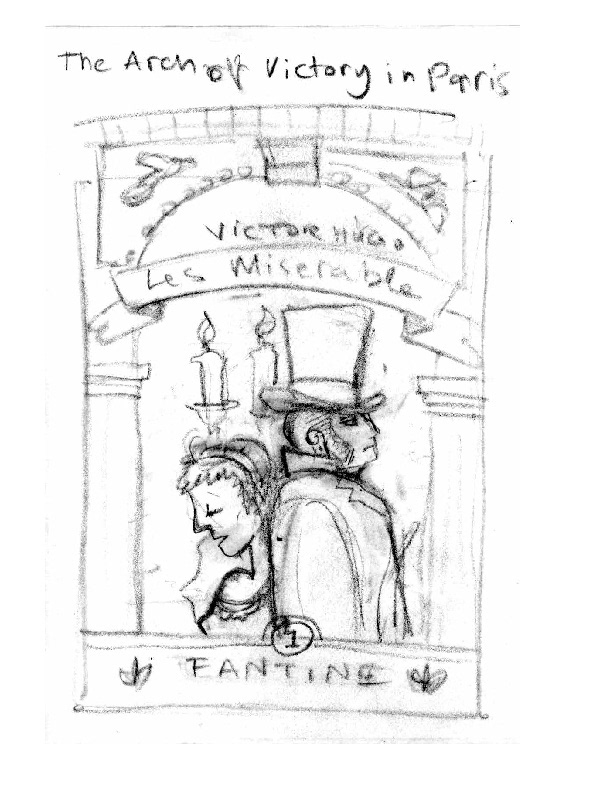


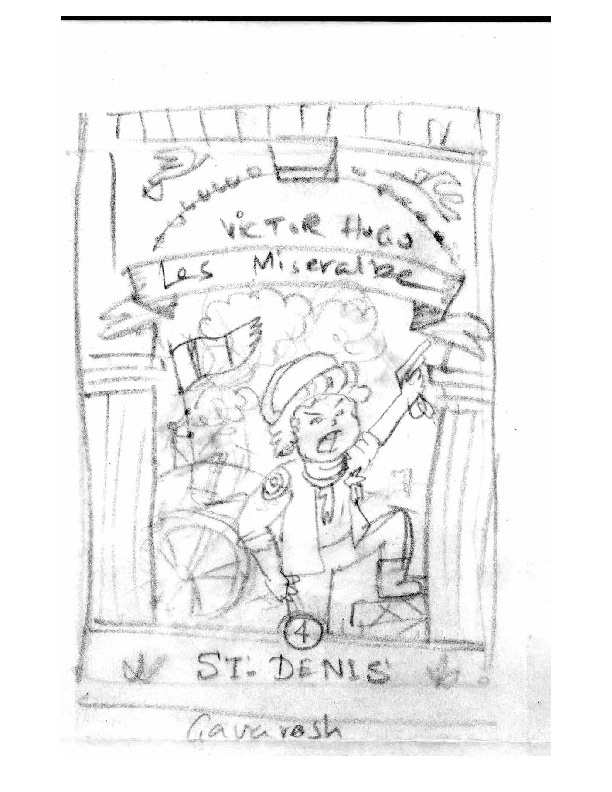
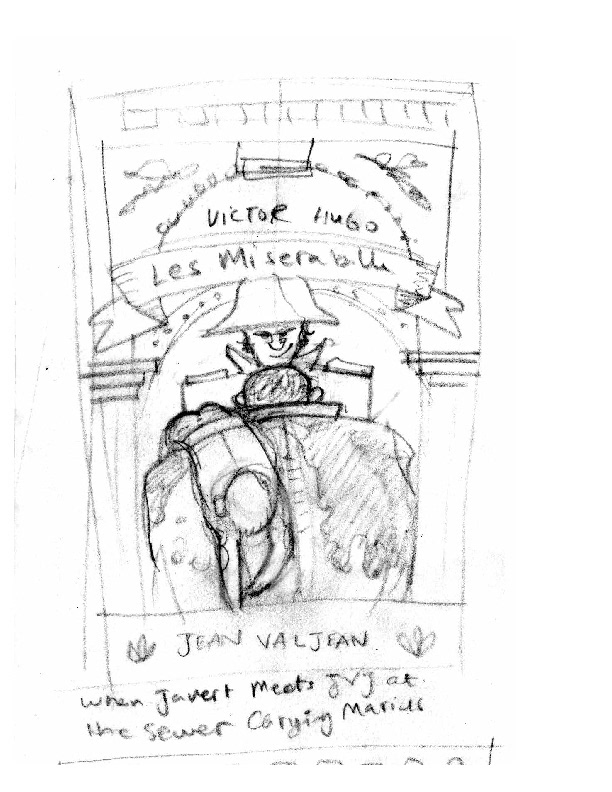
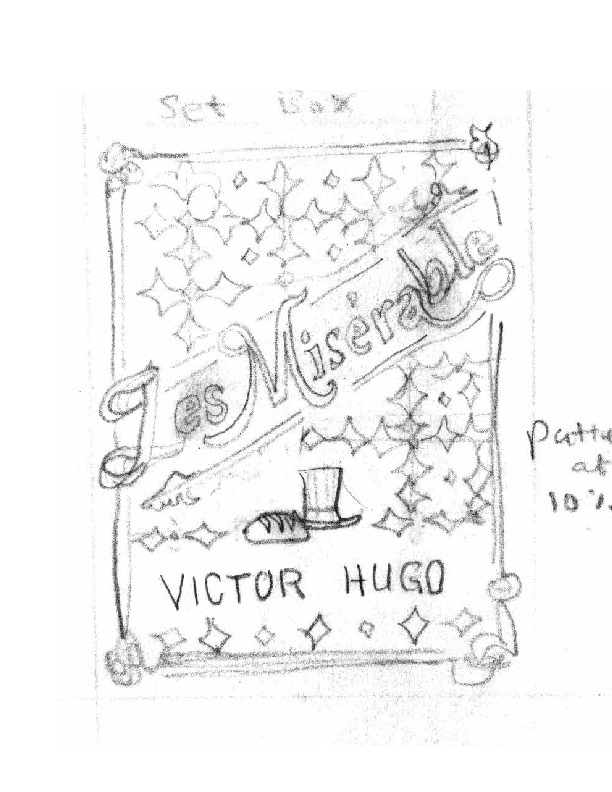

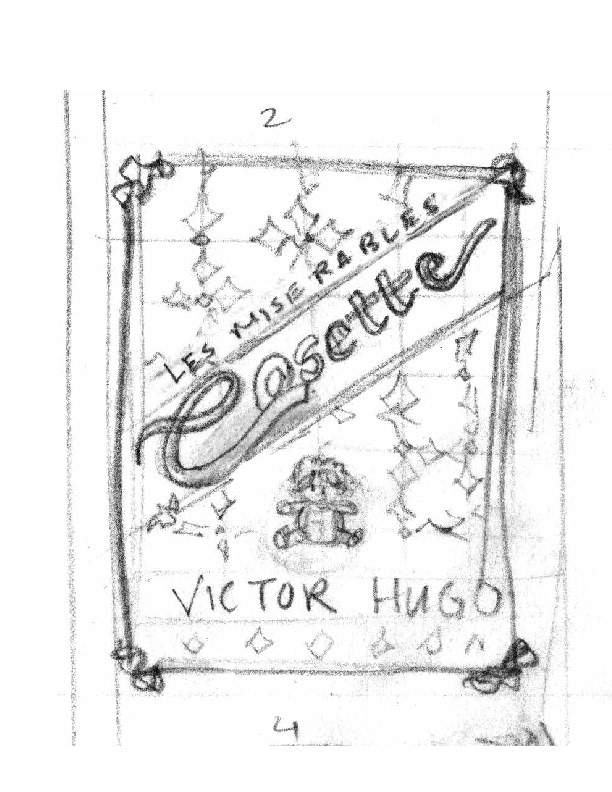
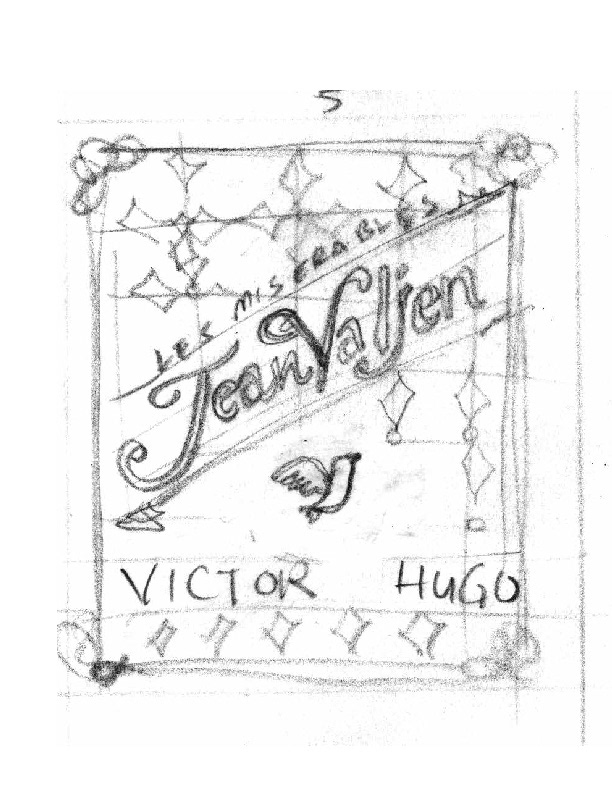
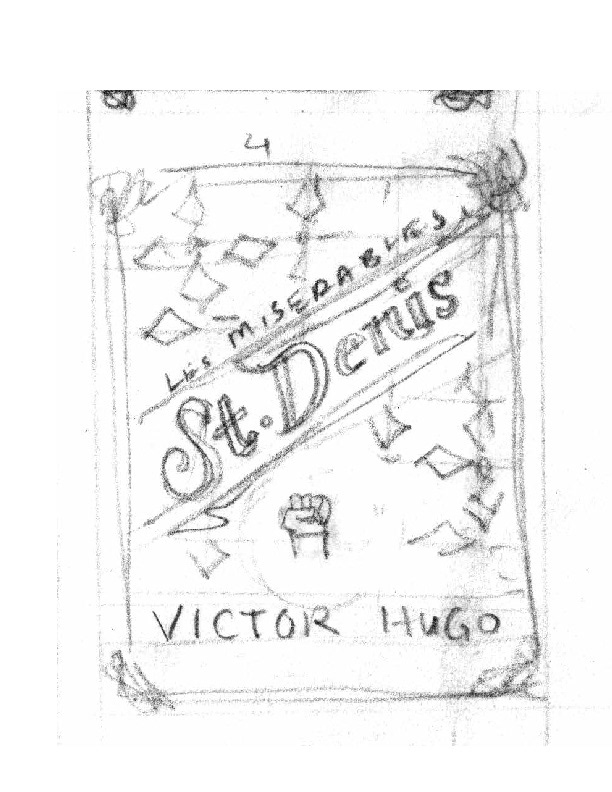
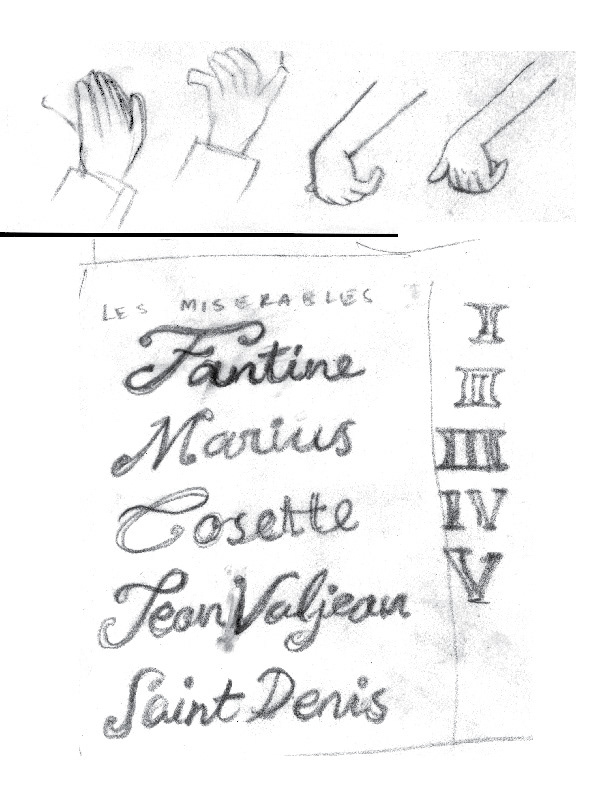
Series Sketch Options
In my sketches I tried to show different styles and angles of layout and drawing and
type/lettering; the first option was childish cartoon drawing, the second was cartoon close-ups portraits almost manga-like, the third was classic with realistic comic drawing, the last was abstract Victorian patterns and lettering, I included in my sketches six sketches for each option, I also included the covers, the series collection box that holds the five volumes together, I included process sketches and experiments.
In this project there were some challenges, like exploring and researching the lifestyle of the 1800s, rereading the plot of and main events on the novel and re-imagining them for covers, doing a lot of researching of different covers of books and comics, movie and TV productions and animations of that story, I re-watched a few of them to get inspiration. I was also looking for typefaces of that time period. I actually went out and visited bookstores and I spent time flicking thought all children-books on the shelves and taking photos, just to come up with an art that simulates that era and ads visual interest to the covers for readers to read, this took way longer time that I expected, and I unfortunately couldn’t re-sketch or improve my sketches.
type/lettering; the first option was childish cartoon drawing, the second was cartoon close-ups portraits almost manga-like, the third was classic with realistic comic drawing, the last was abstract Victorian patterns and lettering, I included in my sketches six sketches for each option, I also included the covers, the series collection box that holds the five volumes together, I included process sketches and experiments.
In this project there were some challenges, like exploring and researching the lifestyle of the 1800s, rereading the plot of and main events on the novel and re-imagining them for covers, doing a lot of researching of different covers of books and comics, movie and TV productions and animations of that story, I re-watched a few of them to get inspiration. I was also looking for typefaces of that time period. I actually went out and visited bookstores and I spent time flicking thought all children-books on the shelves and taking photos, just to come up with an art that simulates that era and ads visual interest to the covers for readers to read, this took way longer time that I expected, and I unfortunately couldn’t re-sketch or improve my sketches.
In option one, I used the concept of the smiley and sad face as a pattern on the box and across all volume covers, Jean Valjean’s fist was also on most of the covers. I used the popular art of Cosette holding the sweeper, I also liked to show the child Cosette holding Jean Valjean’s big hand after he got her the doll she always wished for. The angles are all further close-ups, I was trying not to show Jean Valjean’s face, thought this character represents good, and mercy, and kindness specially that he was involved in charity work throughout the story that he didn’t want to reveal himself.
In option two, I drew a cartoon style portrait, manga-like, I used a different angle this time, that shows the shoulder of the characters, represents emotions and thoughts, like fear, looking back to the past, sometimes I used that angle to show love and support, or happiness, or even death or grief.
In option 3, the concept was using the glory of Paris through the Arch of Triumph to frame my art, I used comic style, this is the only option I showed inspector Javert, I thought he’d look great in the background through the gate, I used a ribbon, thought would give a feel of the era as well.
In option 4, a symbolic, minimal approach, but I also thought I’d love to see a pattern at a
percentage, basically with the Victorian typography of the era. On the main cover/box, I showed and icon of a hat and loaf of bread to summarize the story of Jean Valjean that had to steal bread to feed his mom and siblings and went to prison over that and continued all his life running away from that loaf of bread he stole one day even after he started over and became a wealthy businessman. The rest are icons of a pair of scissors for Fantine losing her hair, heart, a fist for the revolution, and finally a flying dove, to represent peace and freedom for the last volume of the novel.
percentage, basically with the Victorian typography of the era. On the main cover/box, I showed and icon of a hat and loaf of bread to summarize the story of Jean Valjean that had to steal bread to feed his mom and siblings and went to prison over that and continued all his life running away from that loaf of bread he stole one day even after he started over and became a wealthy businessman. The rest are icons of a pair of scissors for Fantine losing her hair, heart, a fist for the revolution, and finally a flying dove, to represent peace and freedom for the last volume of the novel.
Color Palette
Below is the color palette I selected for my covers, colors are medium tones lean more towards vibrancy, although the novel included multiple depressing events about the prisoner Jeanvaljean and the mother Fantine, but the theme stars to become more vibrant as we go to the latter parts of the novel.
There was a lot of moments of drama, a lot more moments of emotion, excitement, and passion, the main colors for the novel are the French flag colors which I used for the 5-volume Set, warm dark blue, pale white.
I used purple and yellow for Fantine Vol.1, she was sick and suffering, Valjean was out in the darkness after 19 years in the prison, also in this part, you see states of humanity in different forms, the vanity of the rich society collides with Fantine's modesty and need, the the arrogance of Javert meets and refraction of Valjean.
In Cosett's part, I used teal and pink colors to represent innocence and childhood, while in Marius I used colors of passion, pink and red of him falling in love with Cosette at the first sight, also represents rage when joined the French people revolution. In St. Denis part I'm using colors of fire, red and yellow, yellow represents Ponine's jealousy and on-sided love to Marius.
For the last part I used teal and yellow, teal for peace and tranquility and yellow for illumination that Valjean reaches too upon his death leaving his Cosette peacefully with her beloved man Marius, and joining Fantine into God's grace.
Illustration Process
Screenshots from the Illustration Process
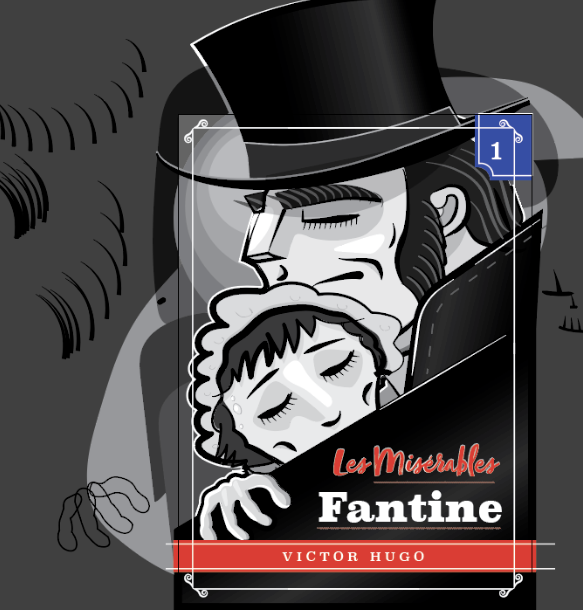
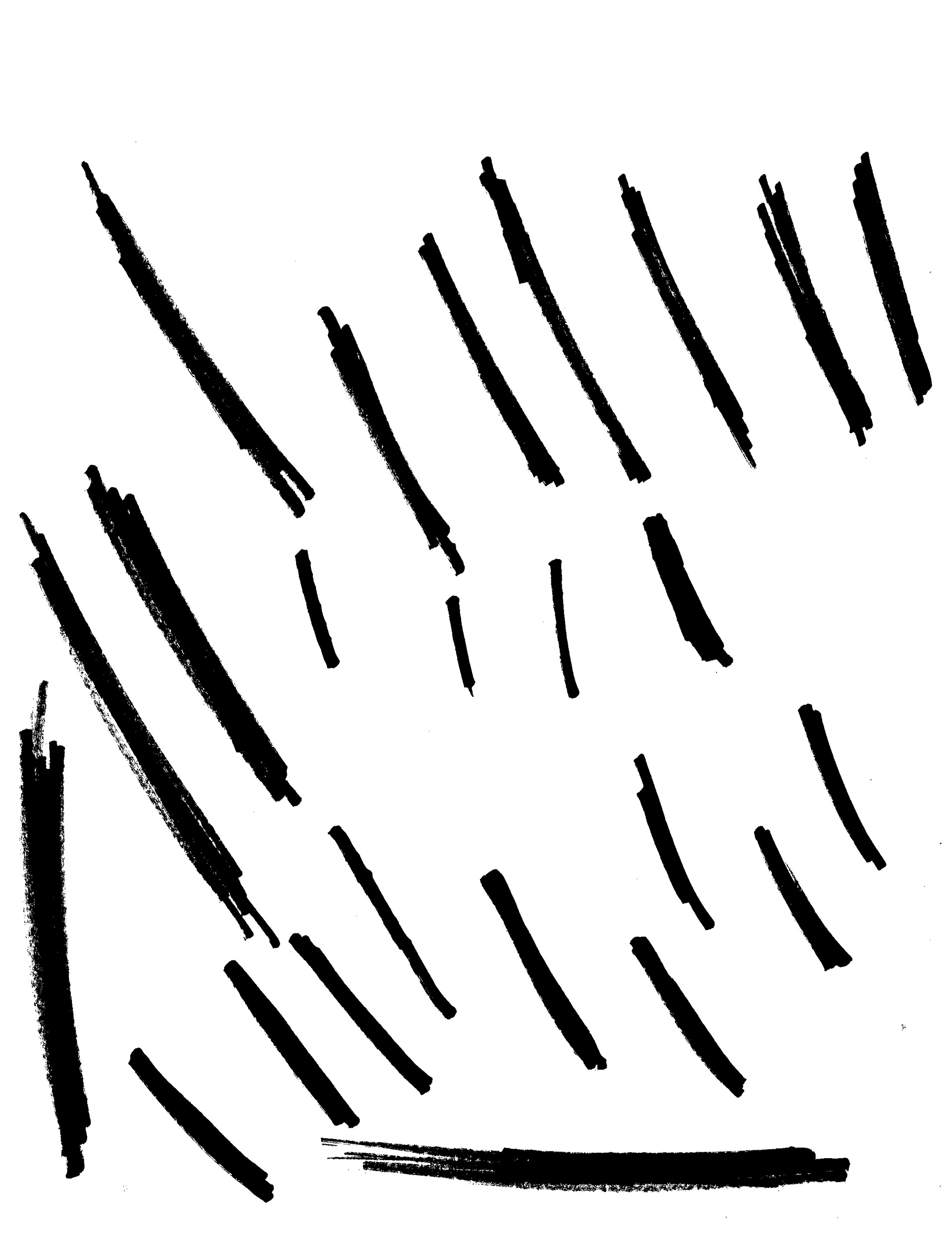

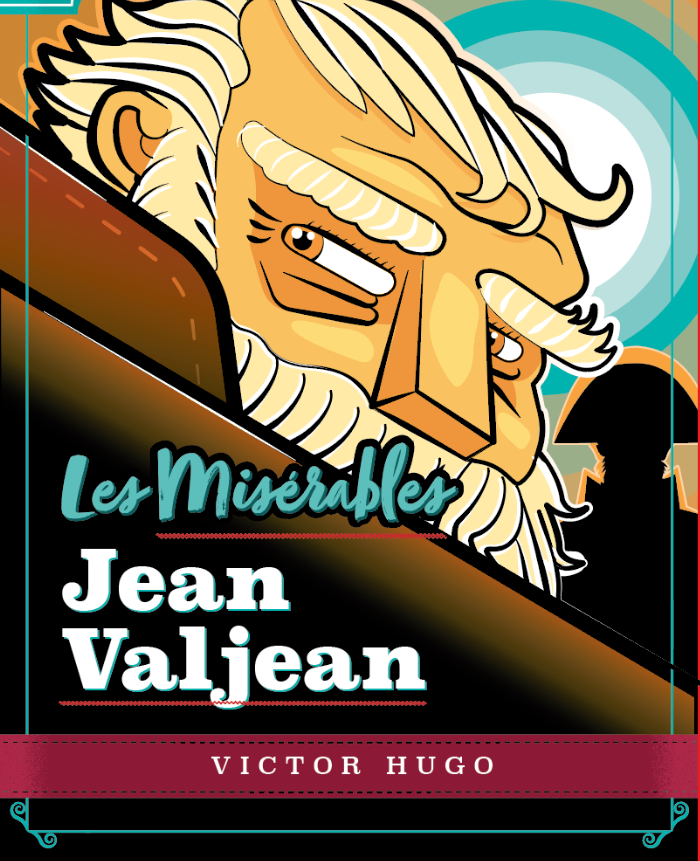
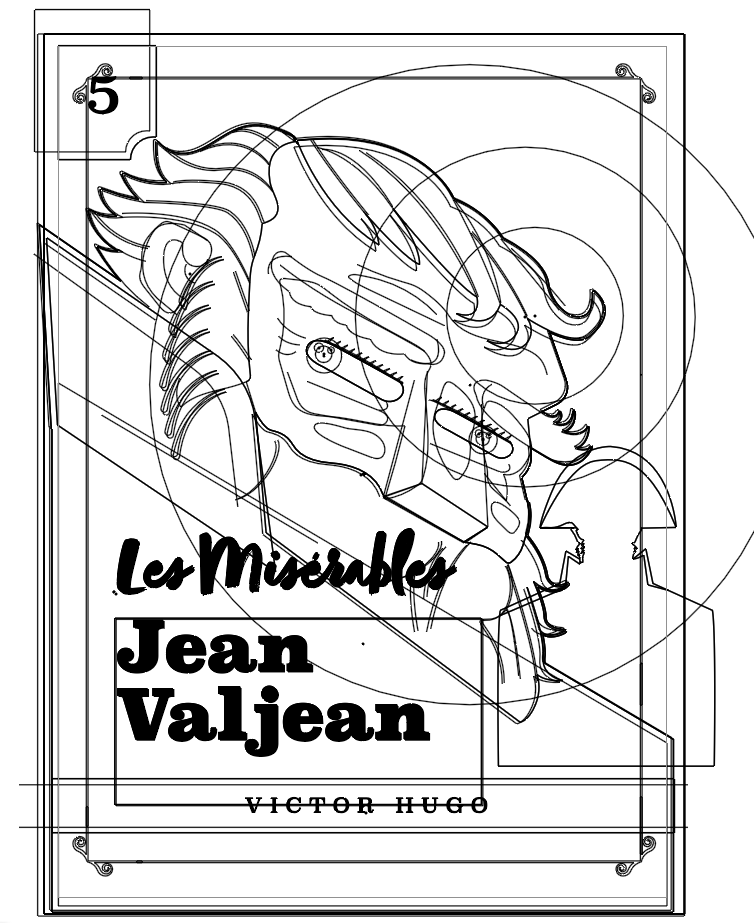

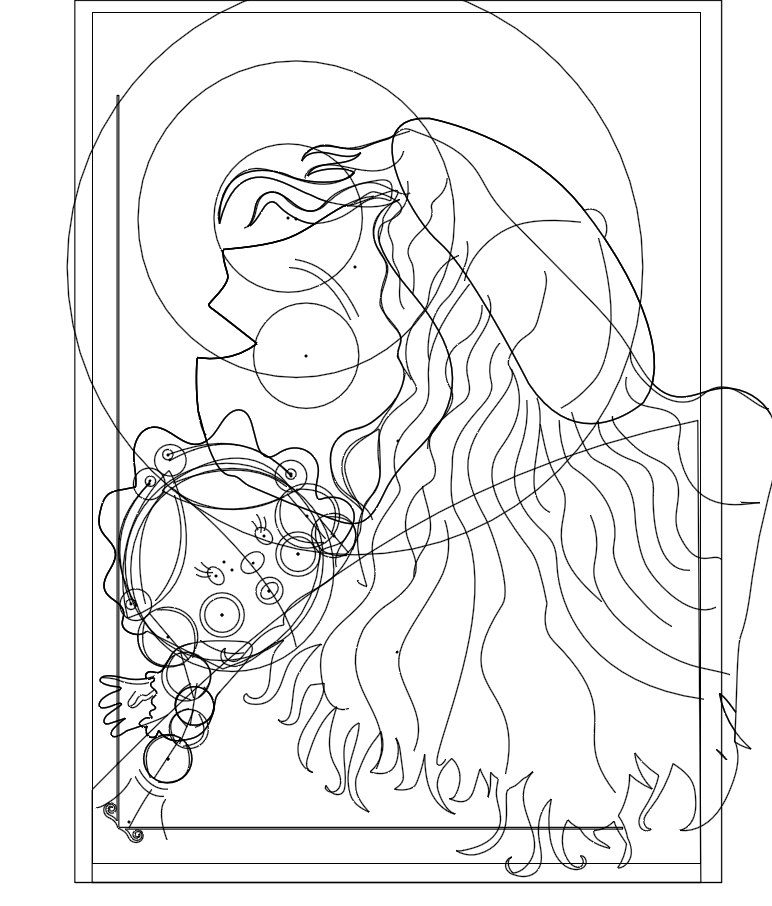
Final Vector Illustration
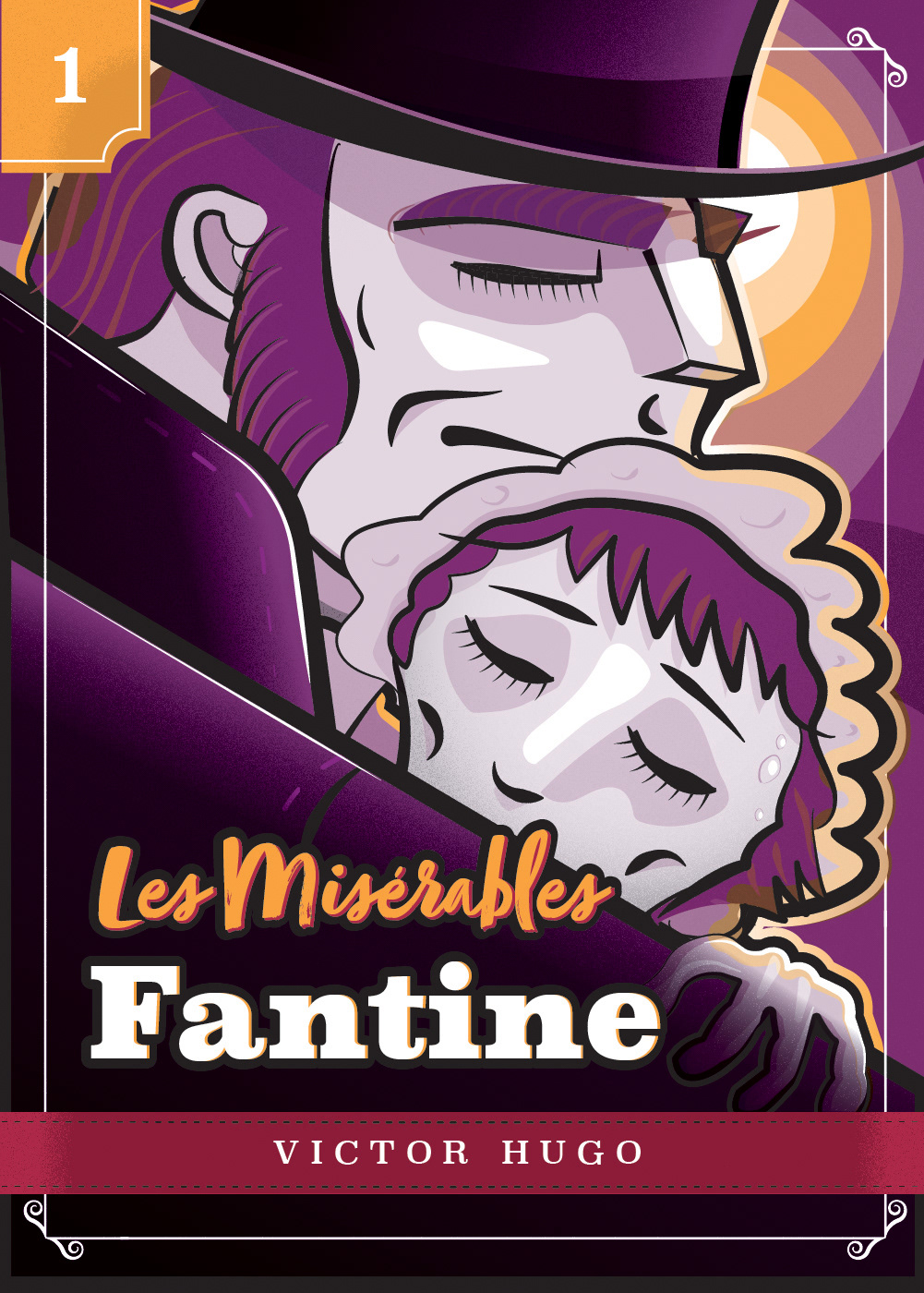

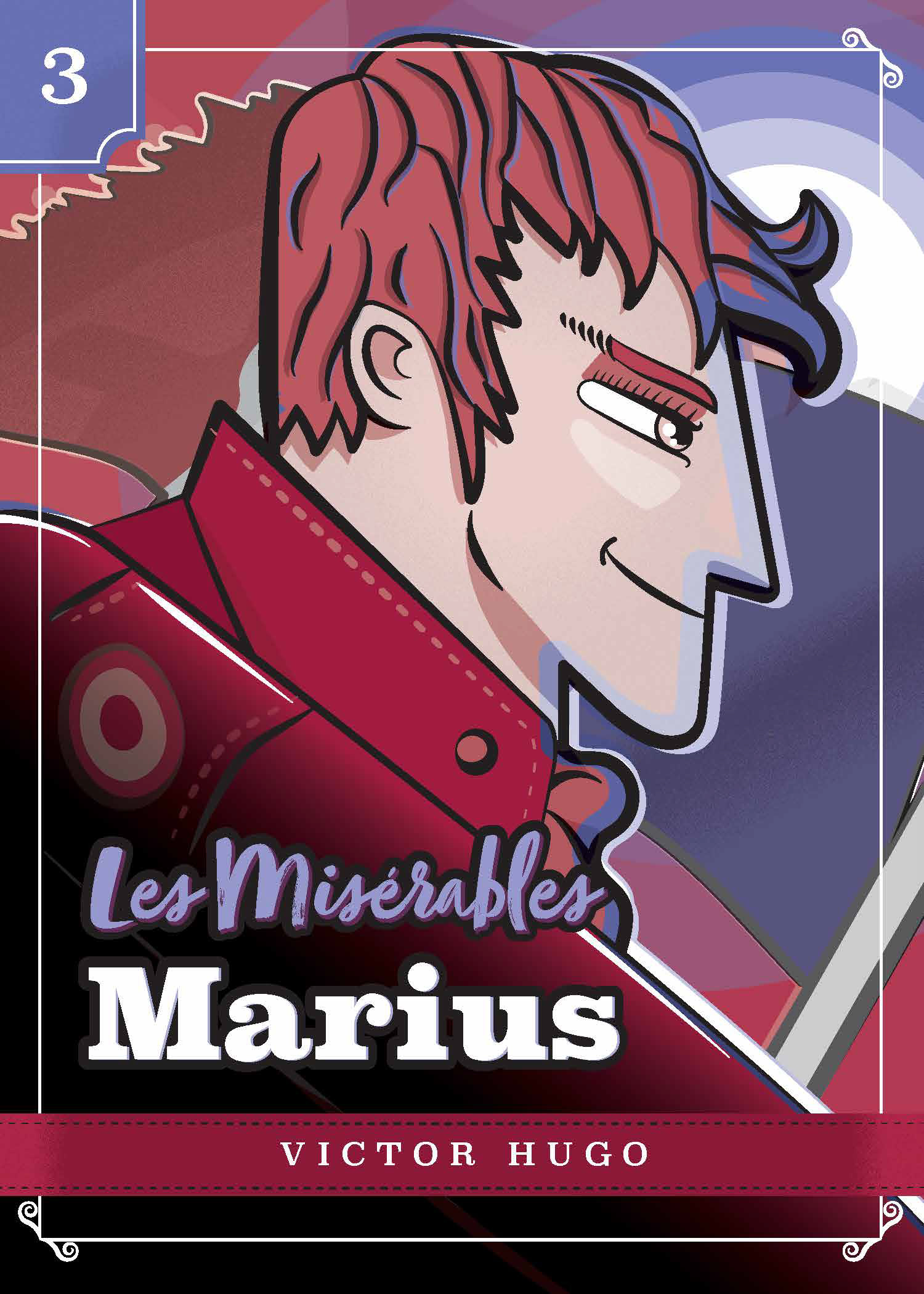


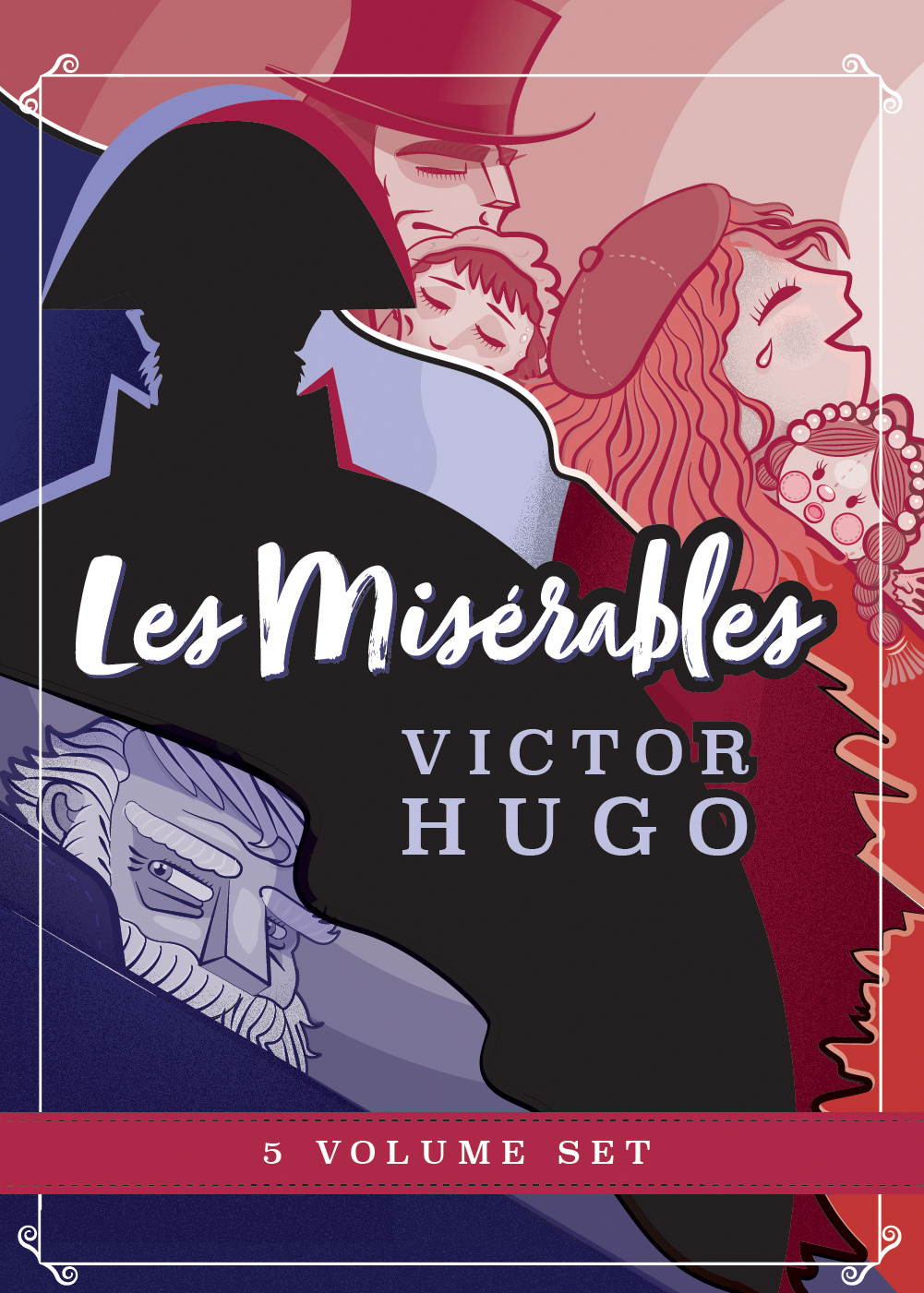
Details
Some details show techniques like gradient grains and brush strokes.
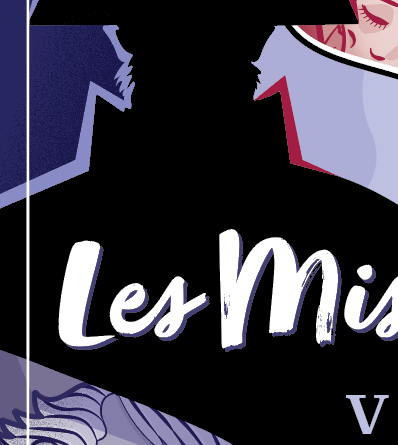
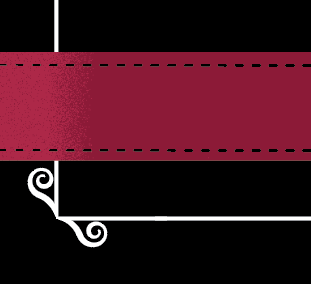

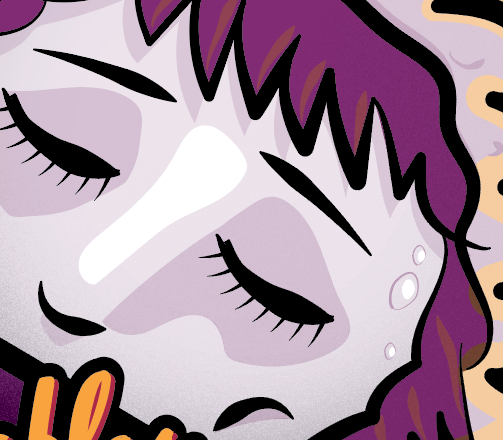
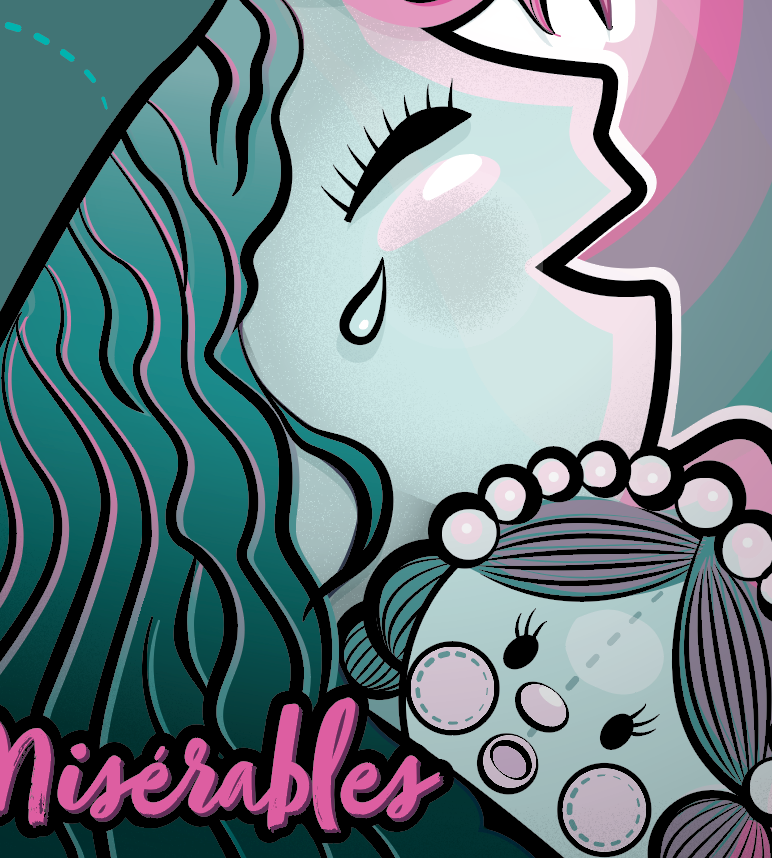
Mockups
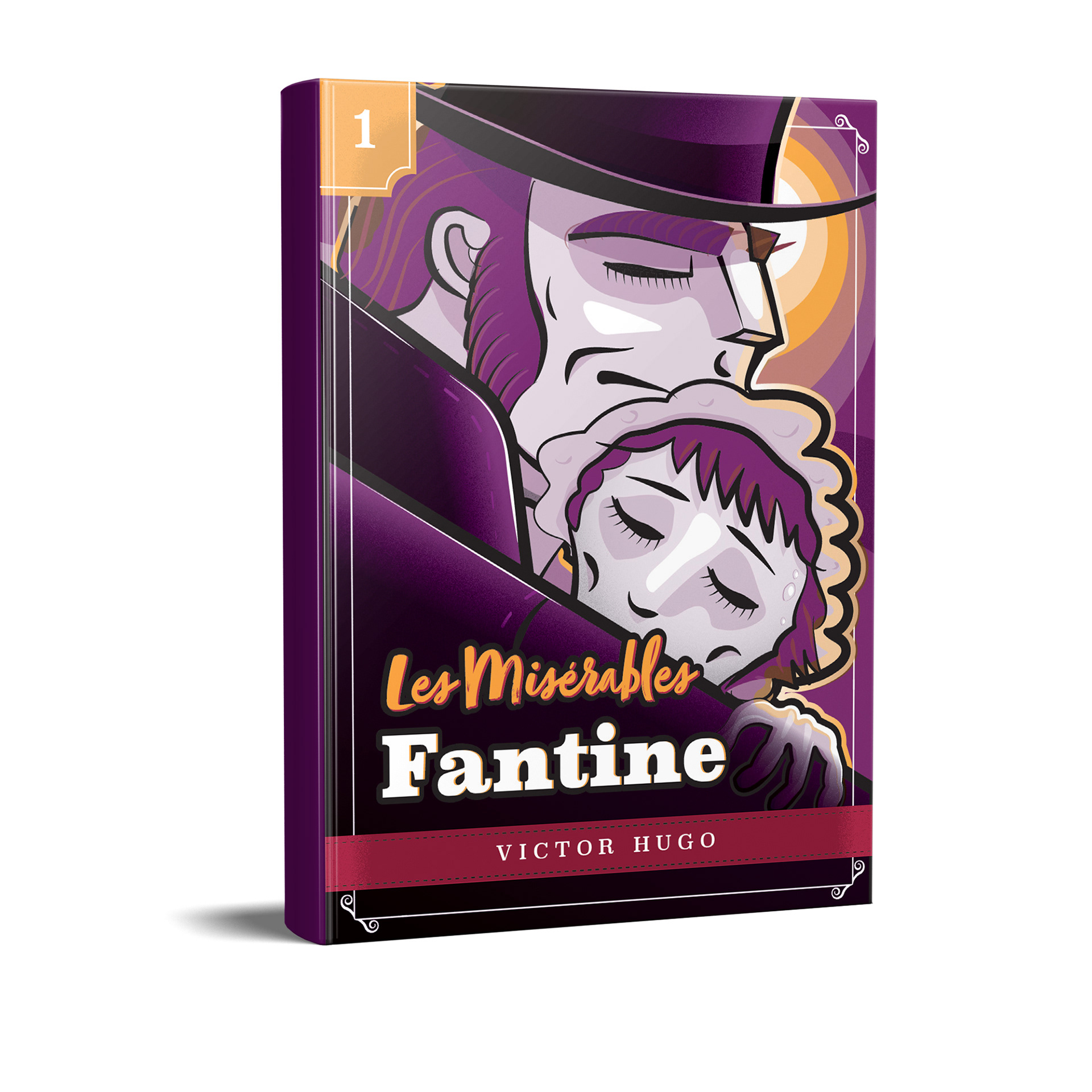
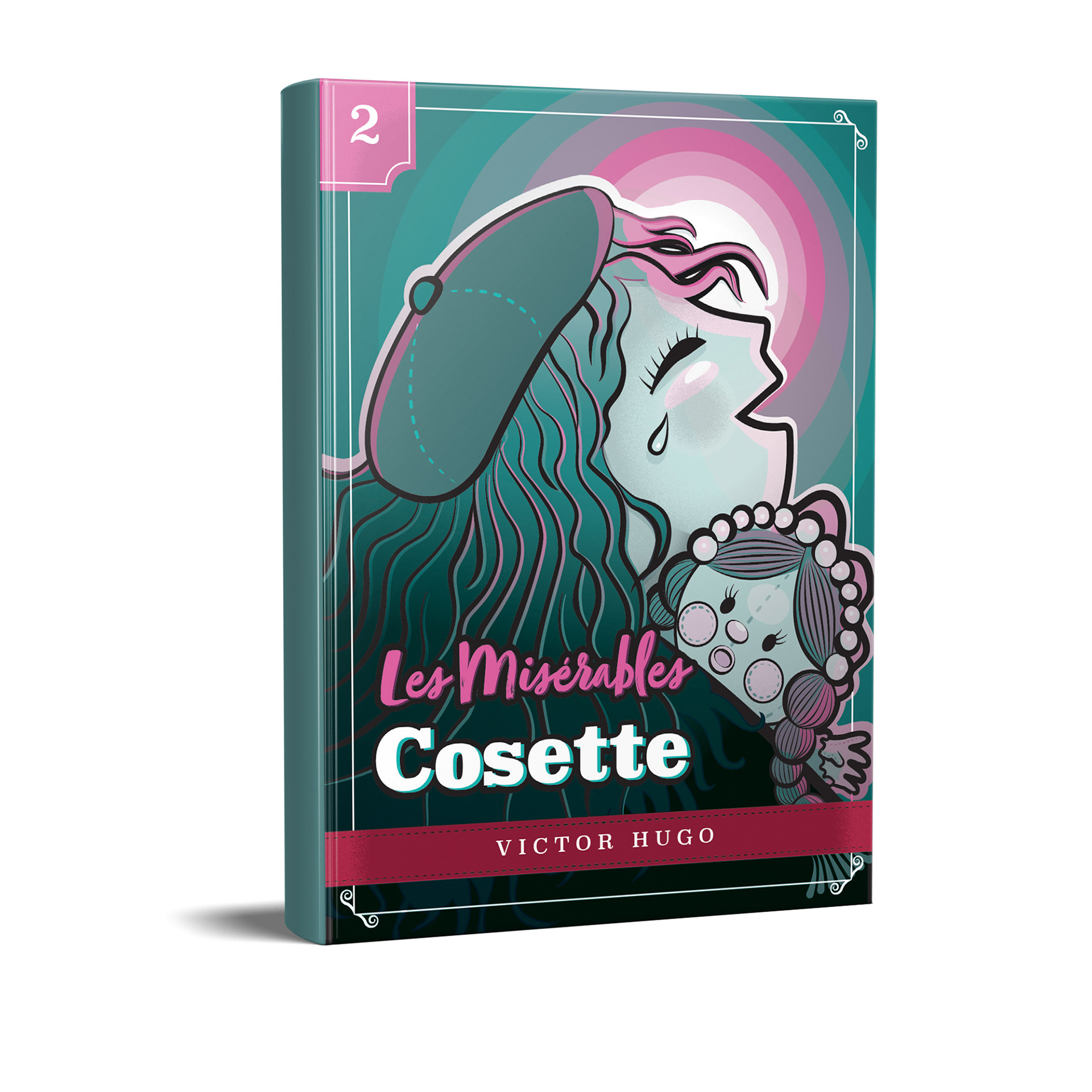

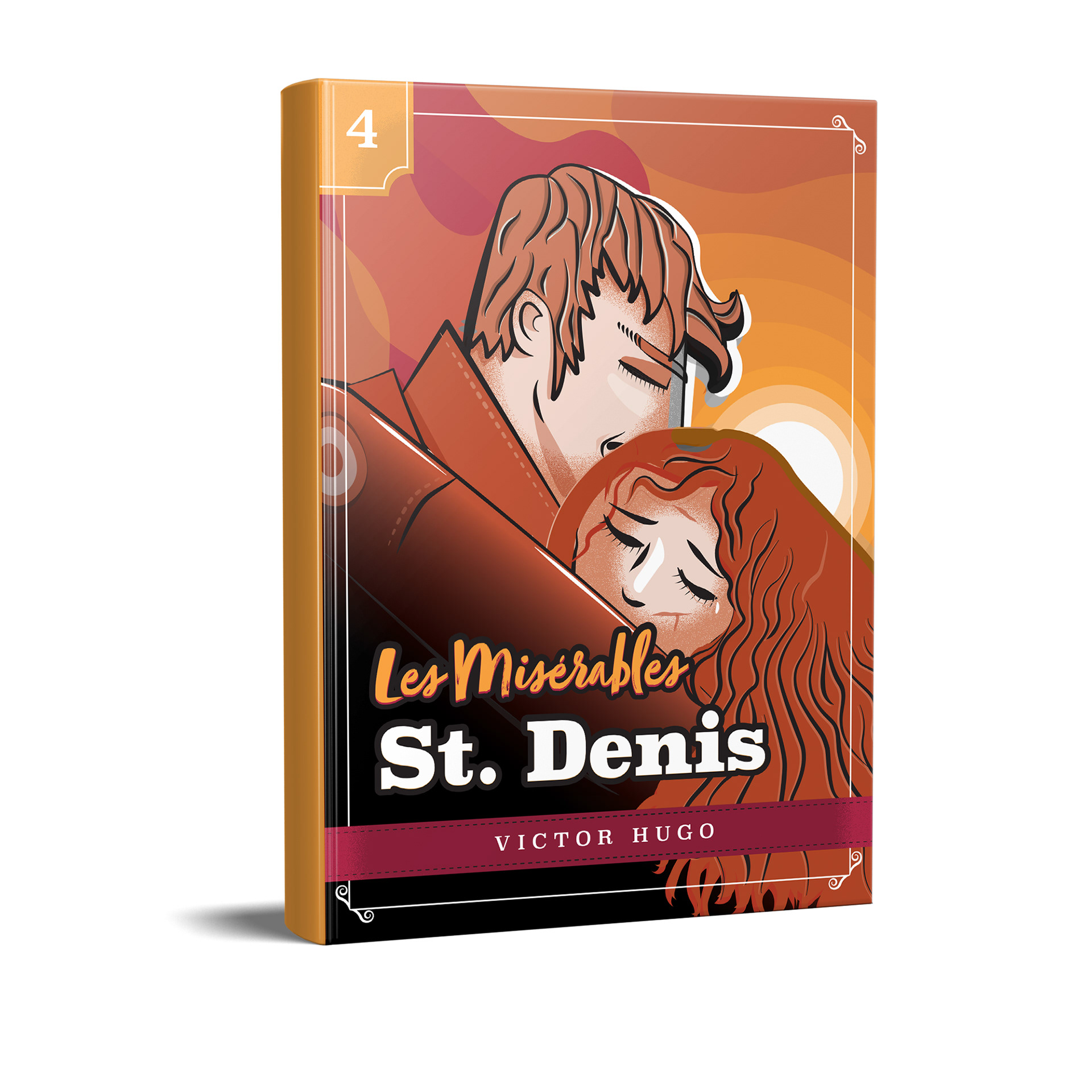
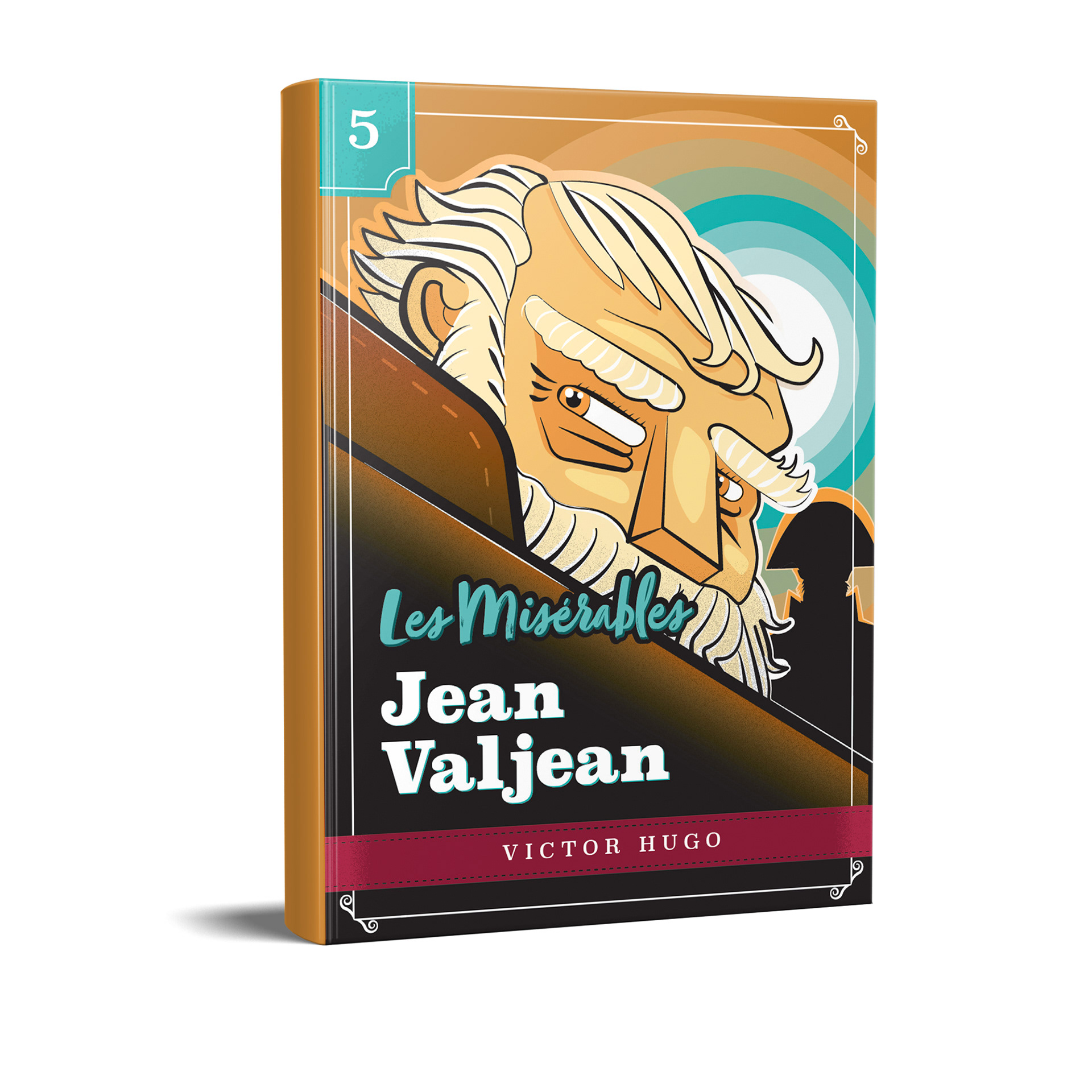
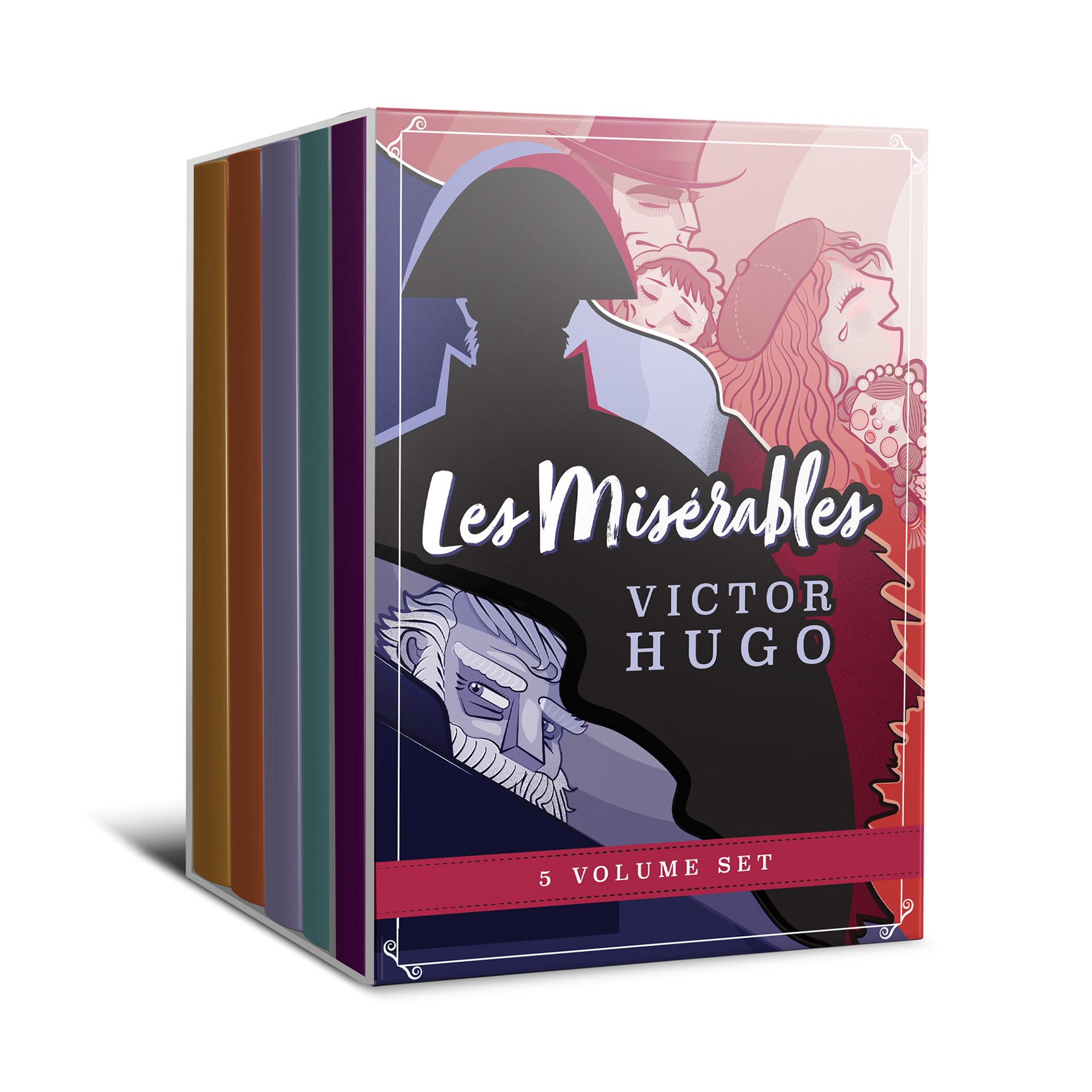
THANKS
Firas Ota Bachi © 2021